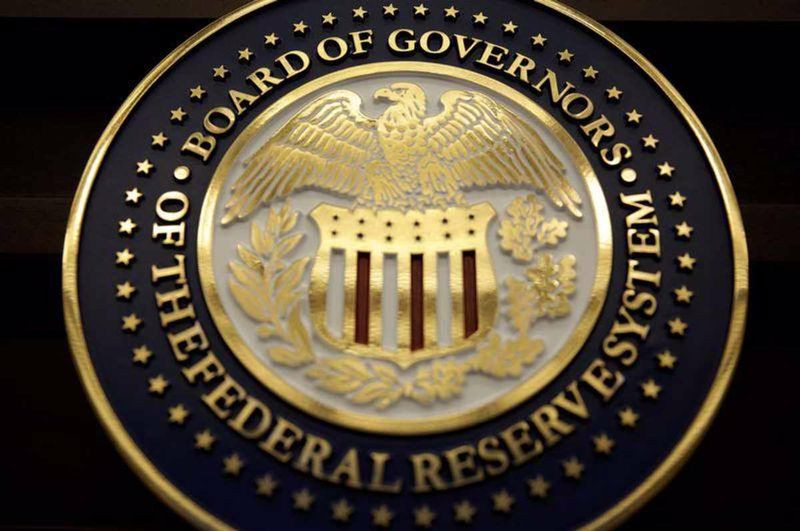
Over the past month, the US currency has declined by more than 2% against its main competitors.
Does this mean that the USD rally, which brought it to the levels of almost twenty years ago in July, has exhausted itself.
The US inflation reports published last week prompted investors to abandon the protective dollar and return to the stock market.
As a result, the USD index fell to its lowest level since the end of June at 104.60 last Thursday. At the same time, the key Wall Street indices showed a resumption of upward dynamics.
"News of a slowdown in inflation, together with very strong July data on the US labor market, gave a new impetus to expectations of a "soft landing" of the American economy," UBS reported.
The bank's analysts note that the stock market currently corresponds to core inflation, returning to 1.5-2%. According to their estimates, if the indicator turns out to be a percentage point higher, the adjustment of the estimate will lead to a 25% drop in the S&P 500.
The broad market index has regained more than half of the losses from the beginning of the year to the lows of mid-June.
Apparently, traders began to play out a scenario according to which inflation in the United States will begin to decline in the foreseeable future, and the Federal Reserve will abandon the aggressive policy of raising rates.
Since the inversion of the yield curve of the treasury indicates the risk of recession, the market assumes that next year the Fed will switch from fighting for control over inflation to supporting the economy and begin to lower the rate.
Fed rate futures now see that it will reach its high at 3.50-3.75%, and the decline will begin in July next year.
If the peak of inflation in the United States has really passed and the thesis that the US central bank will slow down the pace of rate hikes remains unchanged, this will potentially make it difficult for the dollar to move to new highs.
The market reaction to the release of the July consumer price index in the United States shows a premature desire to make a Fed reversal in quotes, HSBC economists say.
They believe that the Fed's rate of policy tightening and the associated strengthening of the dollar are likely to continue until new evidence of a slowdown in core inflation in the United States appears.

"Until there are new clear and stable signs that core inflation in the United States should return to the target level, the Fed's rate of tightening and the associated strengthening of the dollar are likely to remain," HSBC strategists said.
"We suspect that the market continues to underestimate the importance of the ongoing global economic slowdown. The consequences of this slowdown for risk reduction will continue to support the greenback, given its status as a safe asset," they added.
The US currency will remain strong, as it is too early for the Federal Reserve to think about lowering the base interest rate, HSBC analysts say.
Even when the Fed starts lowering the rate, this will not happen in isolation from other central banks, experts believe.
"Thus, the dollar is likely to be able to maintain dominance, as the US economy is better coping with the weakening of global growth momentum," HSBC reported.
Commerzbank analysts expect a recession in the United States next year. Nevertheless, since the overall picture of the still strong American economy remains unchanged, the dollar also retains its position.
"It's true that we expect a recession in the US early next year. But it is still far from the moment when the Fed will be forced to seriously worry about the state of the economy. And uncertainty about how much the American economy will weaken at all is still high. Therefore, it is still too early to put a recession in the USD rate. Until there are clear signs of a slowdown in economic growth, the Fed's active attitude should support the dollar," Commerzbank noted.
Already at the end of last week, the greenback managed to regain its composure, as several Fed policymakers started talking about the need to continue raising rates.
"Fed officials have no choice but to be tough in the face of a very, very tight labor market and too high inflation. In this world, it is difficult to create convincing arguments in favor of selling the dollar," Societe Generale strategists believe.
The greenback strengthened by more than 1% during the two-day recovery that began on Friday.
The USD index rose by 0.79% to 106.50 on Monday. Meanwhile, the euro fell by 0.97% to $1.0160.
"It seems quite obvious that the US economy is a late-cycle economy with high inflation and low growth. This stage of the cycle is synonymous with inverted yield curves. In this part of the cycle, the greenback usually stays afloat until the conviction grows that the Fed will ease policy, and the yield of two-year US bonds begins to decline. This is likely to happen in the first quarter of 2023," ING analysts said.
"We expect the Fed to raise the rate by another 125 bps this year and a total of 50 bps ECB rate hike in September. The risks are deployed in the direction of even higher rates in the United States. As Europe enters a recession amid the impending energy crisis this winter, the EUR/USD pair may remain near lows in the second half of 2022," they added.
Weak statistical data on China published the day before raised concerns about global growth. This led to a depreciation of the euro against the US dollar, which benefited from the influx of funds to safe havens.
The greenback reached a two-week high around 107.00 points on Tuesday, pushing the EUR/USD pair to its lowest level since August 3 in the area of 1.0121.

Disappointing statistics on the eurozone, in particular, on Germany, contributed to the weakening of the euro. Thus, investor confidence in the German economy in August reached its lowest level since 2008, dropping to -55.3 points from -53.8 points in July. Analysts expected that the indicator would remain at the level of the previous month.
Meanwhile, the eurozone's foreign trade deficit narrowed to €24.6 billion in June from €26.3 billion in May. Experts predicted a deficit of €20 billion.
However, the greenback quickly surrendered its won positions, retreating to 106.40 points, amid renewed risk appetite. Key Wall Street indicators were trading mainly in the green zone on Tuesday.
Ahead of the opening of trading in New York, statistical data for the United States were published, which showed that in July the number of building permits decreased by 1.3% on a monthly basis, while the volume of housing construction over the same period decreased by as much as 9.6%. The dollar rally lost momentum after this news was announced, which helped the EUR/USD pair to compensate for its losses. It rose by more than 70 points before correcting somewhat.
Saxo Bank strategists note that the situation with gas and electricity in the EU continues to deteriorate, and, as a result, the euro suffers.
On the European Energy Exchange on Tuesday, the cost of electricity in Germany for the year ahead increased by 5.2% to €502 per megawatt hour.
Gas prices in the eurozone also continued to rise, exceeding the mark of $2,600 per thousand cubic meters for the first time since the beginning of March.
These developments threaten to increase further pressure on the region's business in the coming months.
"The current situation in Europe is unstable and will require significant improvements on both the geopolitical and inflationary fronts. Economic growth in the region is likely to slow down in the second half of the year," NBC analysts believe.
"We are still seeing some continued weakness in the euro in the short term," they said.
The EUR/USD pair found support in the area of 1.0120. As long as it remains above this mark, the euro's losses look limited. However, the short-term trend still points to a decline. The key support level is 1.0100, consolidation below which will lead to a fall to parity.
On the other hand, the initial resistance is at 1.0200, and then at 1.0240 and 1.0280.
 English
English 
 Русский
Русский Bahasa Indonesia
Bahasa Indonesia Bahasa Malay
Bahasa Malay ไทย
ไทย Español
Español Deutsch
Deutsch Български
Български Français
Français Tiếng Việt
Tiếng Việt 中文
中文 বাংলা
বাংলা हिन्दी
हिन्दी Čeština
Čeština Українська
Українська Română
Română

